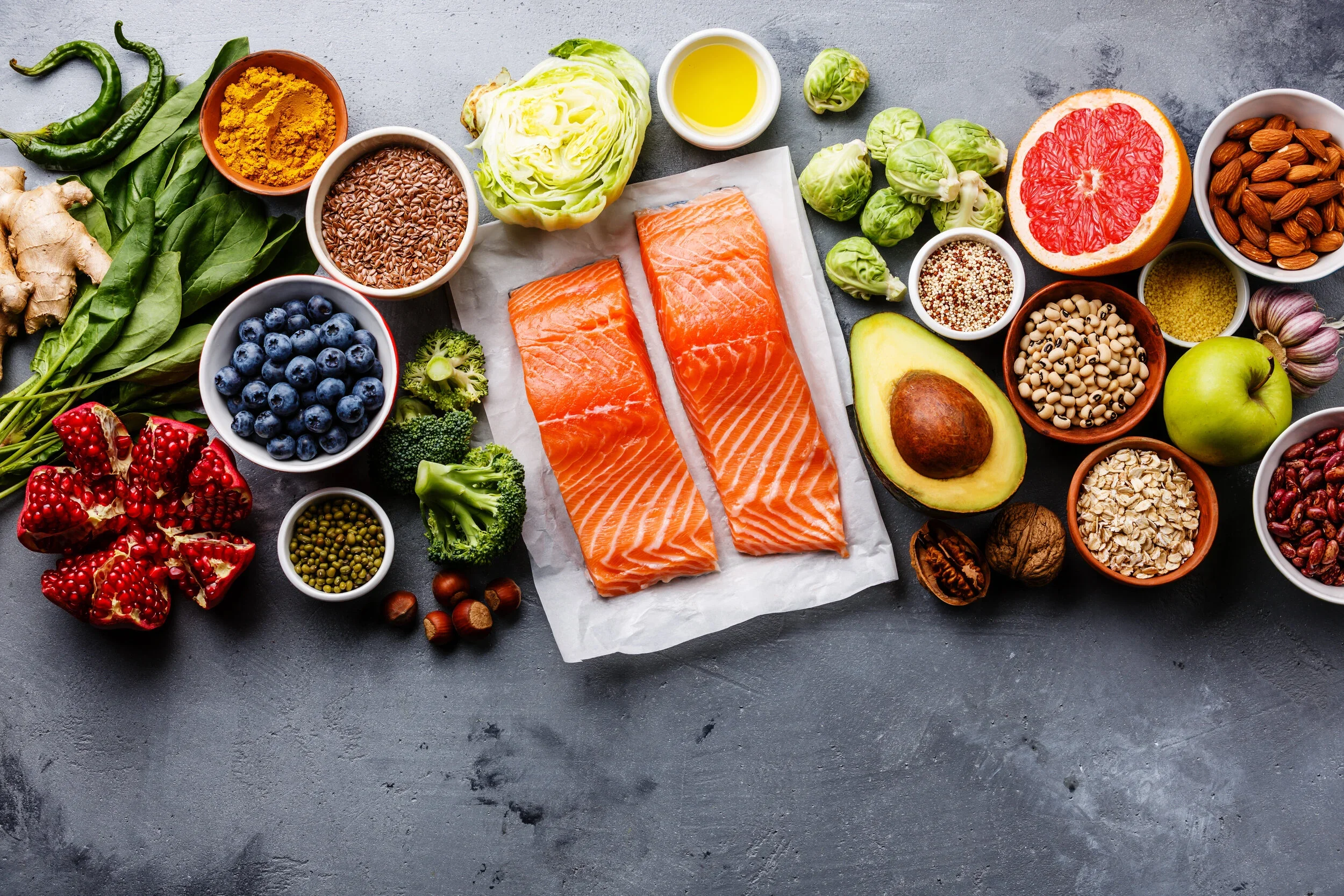Part 3: Healing the Inflamed Brain — Natural Detox & Rebalance Strategies
If you’ve followed along with this series, you now know what neuroinflammation is (Part 1) and what fuels it (Part 2). The good news? You can absolutely support your brain’s ability to calm inflammation, detoxify, and regenerate — naturally.
Think of this as a “daily brain-care plan” that helps your body do what it’s designed to do: repair, protect, and stay clear-headed.
Step 1: Eat to Calm Inflammation
Your brain loves stability. When blood sugar spikes, oxidative stress, or gut inflammation happen, your neurons feel it. A nourishing, anti-inflammatory diet lays the foundation for healing.
Focus on:
Omega-3 fats: Wild salmon, sardines, walnuts, chia, and flax reduce inflammatory cytokines and support neuron membranes.
Antioxidant-rich produce: Eat the rainbow — especially berries, beets, leafy greens, and colorful peppers (polyphenols protect the brain).
Sulfur-rich veggies: Broccoli, garlic, and onions boost glutathione, the brain’s master antioxidant.
Protein with every meal: Stabilizes blood sugar and fuels neurotransmitter production.
Avoid or limit:
Refined sugar, seed oils (canola, soybean, corn), processed foods, and alcohol — they all fan the inflammatory flame.
Pro tip: The Mediterranean diet — rich in olive oil, fish, vegetables, and nuts — is consistently linked to lower neuroinflammation and better cognitive health.
Step 2: Key Nutrients & Supplements
It’s a good idea to check with a qualified practitioner before starting new supplements.
Omega-3 EPA/DHA (1–3 g daily): Reduces microglial activation and supports mood and cognition.
Magnesium (threonate or glycinate): Calms the nervous system and supports detox enzymes.
Curcumin (from turmeric): Potent anti-inflammatory that crosses the blood–brain barrier.
N-acetyl cysteine (NAC): Boosts glutathione, improves antioxidant defenses, and has clinical data for mood and brain health.
Vitamin D3 + K2: Modulates immune response and supports brain hormone balance.
Resveratrol or green-tea EGCG: Plant polyphenols that help quiet neuroinflammatory signaling.
All of these, and more, can be found in my professional dispensary if you go to ‘Shop’ and then ‘Supplements’ at the top of this site.
Step 3: Herbal & Lifestyle Detox Support
Your brain depends on your liver, gut, and lymphatic system to clear inflammatory by-products and toxins.
Herbal allies
Milk thistle: Supports liver cell regeneration and glutathione production.
Gotu kola & ginkgo: Improve circulation and protect brain tissue from oxidative stress.
Ashwagandha & rhodiola: Adaptogens that balance the stress response (chronic stress is a major neuroinflammatory driver).
Gotu Kola Plant
Gentle detox habits
Stay hydrated with properly filtered water.
Sweat regularly — exercise, sauna, or hot baths help mobilize toxins.
Dry brush or gentle movement to stimulate lymph flow.
Keep bowels moving daily with fiber-rich foods — detox stalls if elimination slows. You cannot detox if you’re not eliminating daily.
Step 4: Rest, Rewire & Restore
Your brain detoxes while you sleep — literally. The glymphatic system flushes waste at night, but only during deep sleep.
Sleep essentials:
7–9 hours nightly, dark cool room.
No screens or blue light 1 hour before bed.
Magnesium or herbal teas (chamomile, lemon balm) can help relaxation.
Stress support:
Breathing slow and deep, prayer, journaling, time in nature.
Avoid information overload — digital detox helps calm neuroinflammation. Avoid too much screen time, scrolling, or late night TV.
Step 5: Keep Your Environment Clean & Nontoxic
Everything you breathe, apply, and clean with can either burden or benefit your brain.
Simple swaps:
Use a HEPA air purifier + open windows when air quality is good.
Choose fragrance-free, low-VOC cleaners and paints.
Filter your tap water for microplastics and heavy metals.
Avoid candles, air fresheners, and dryer sheets loaded with synthetic fragrance.
Replace plastic food containers with glass or stainless steel.
Step 6: Testing & Tracking
If you want data, functional labs can reveal what’s driving inflammation:
hs-CRP, homocysteine: general inflammation.
Vitamin D and Omega-3 index: low levels correlate with neuroinflammation.
Organic Acids Test (OAT): checks oxidative stress, mitochondria, detox pathways.
Toxin or heavy-metal panels: identify environmental contributors.
Re-test every 3–6 months after implementing changes to see improvement.
The Takeaway
Healing neuroinflammation isn’t about doing everything perfectly. It’s about making daily choices that reduce toxic input and boost your body’s natural resilience.
Your thoughts, focus, and emotions all start with how healthy your brain feels — and that begins with the choices you make each day.
References
Calder PC et al. Omega-3 fatty acids and inflammation: Nutrients for brain health. Nutrients (2023).
Tan BL et al. Antioxidant and anti-inflammatory effects of curcumin and polyphenols in neuroprotection. Front Pharmacol (2022).
Chinthapalli S et al. Role of magnesium in neuroinflammation and depression. Front Neurosci (2023).
Michalak A et al. The gut-brain-liver axis in detoxification and neuroprotection. Nutrients (2024).
Heneka MT et al. Neuroinflammation and immune modulation in neurological disease. Lancet Neurol (2023).
Would you like me to create a free downloadable checklist or mini-guide called “Daily Habits to Calm Brain Inflammation” that pairs with this blog and grows your email list?



